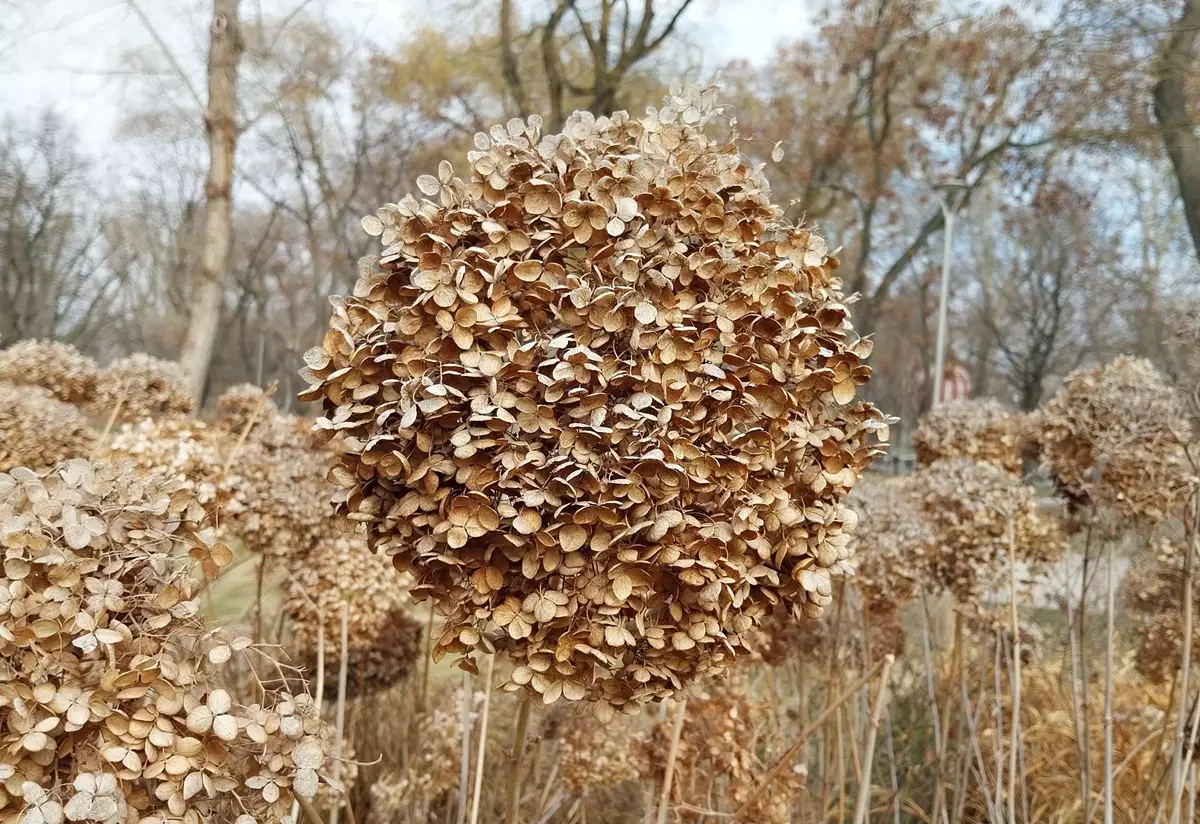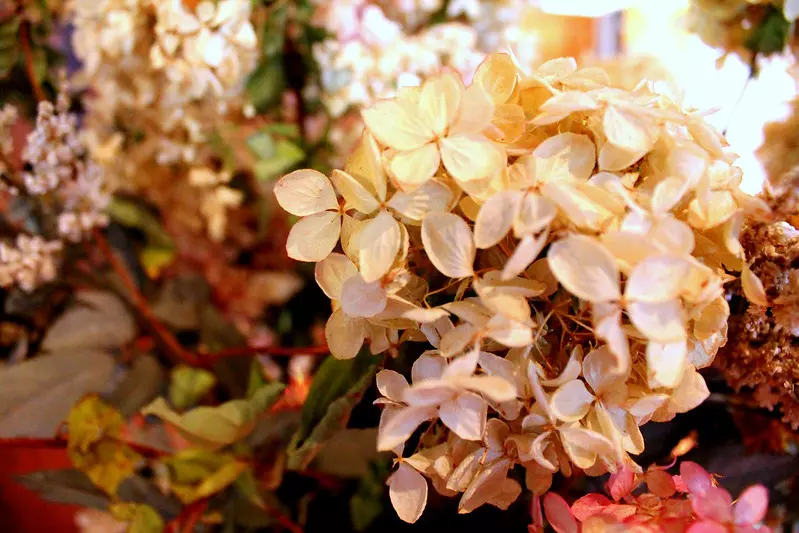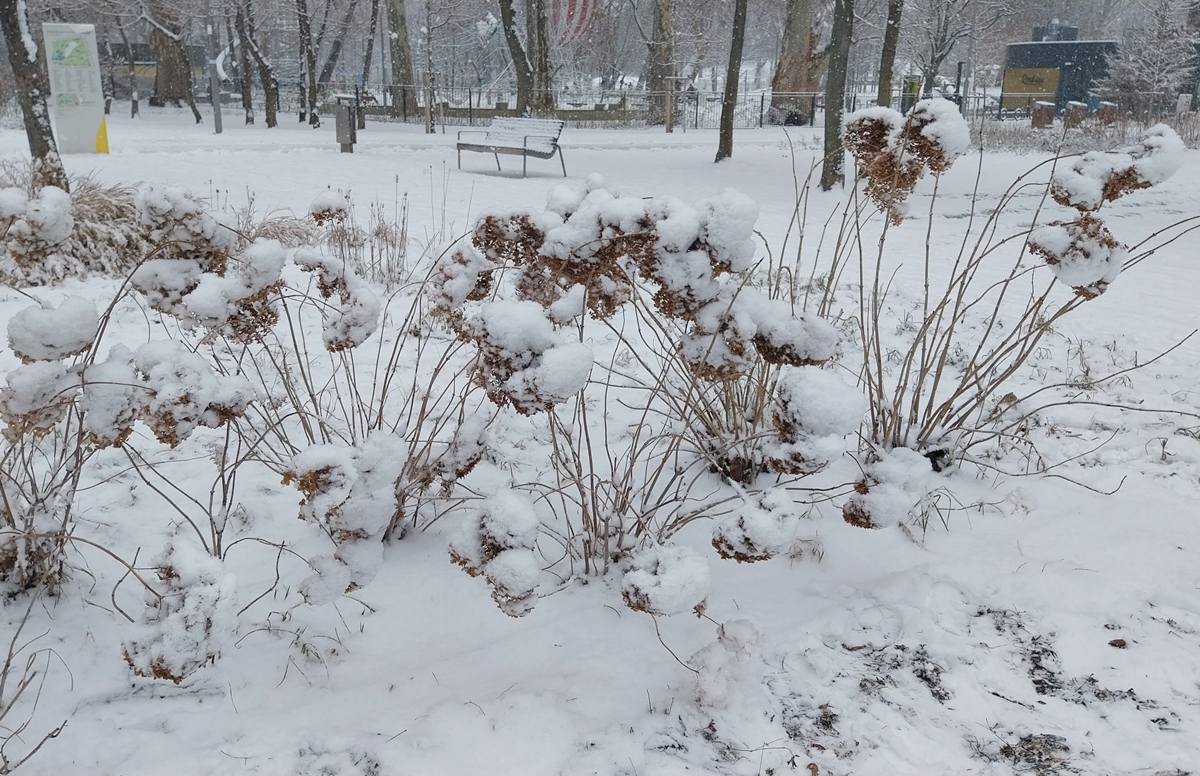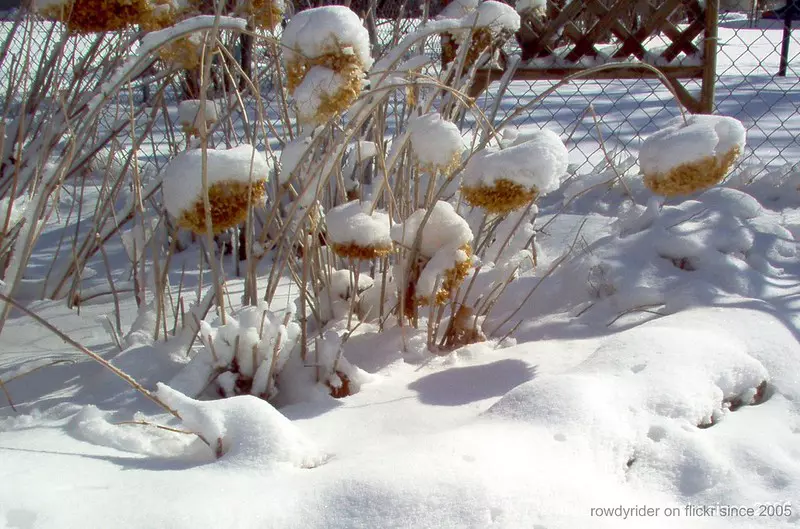When a flower finishes blooming, the plant naturally shifts energy toward seed production. By removing the spent blooms, gardeners can redirect that energy into root development, foliage growth, or the formation of new buds - depending on the plant species. This technique is particularly useful for many flowering shrubs and perennials, including various types of hydrangeas.
One key benefit of deadheading is maintaining the overall tidiness of a garden display. Spent flowers can make even the healthiest plant look tired or neglected. By carefully snipping off dead blooms, you not only enhance visual appeal but also reduce the risk of fungal issues that can arise from decaying plant material - especially in damp or shaded areas.
That said, deadheading is not universally necessary. With hydrangeas, in particular, the decision to deadhead - or not - depends greatly on the variety you’re growing. Some, like Hydrangea paniculata, respond well to regular deadheading, while others, such as Hydrangea macrophylla (mophead) and Hydrangea quercifolia (oakleaf), benefit from leaving the old flower heads in place over winter to protect tender growth buds from frost.
In fact, according to Gardeners’ World, the dried blooms of mophead hydrangeas act as natural insulation during cold spells, shielding next year’s developing buds. Their guide explains that while lacecap hydrangeas can be deadheaded as soon as their flowers fade, mopheads are better left until spring.
This advice aligns with my own personal experience. In my short video Hydrangea Winter Care – Protect Your Plants from Frost Damage, I also explain how leaving dry hydrangea heads in place over winter has helped protect the upper buds on my plants from frost damage, especially in colder climates. It's a simple but effective technique that I've found highly beneficial.
 This photo shows a pair of vibrant green hydrangea buds just before breaking dormancy. Recognising bud positions like these is key when deadheading hydrangeas, especially to avoid removing next season’s flowering shoots. Identifying live bud pairs is crucial in late winter and early spring pruning. - Source: hydrangealibrary.com; Author: Richard Seres-Nagy
This photo shows a pair of vibrant green hydrangea buds just before breaking dormancy. Recognising bud positions like these is key when deadheading hydrangeas, especially to avoid removing next season’s flowering shoots. Identifying live bud pairs is crucial in late winter and early spring pruning. - Source: hydrangealibrary.com; Author: Richard Seres-Nagy
Understanding the blooming cycle and pruning group of your hydrangea is therefore essential before reaching for the secateurs. In some cases, improper deadheading - or mistimed cuts - could lead to fewer flowers the following season. When done mindfully, however, deadheading remains a gentle, low-risk task that supports plant health and encourages a vibrant, floriferous garden.

Should You Deadhead Hydrangeas?
The short answer is: Yes – but with caution and variety-specific knowledge. The Royal Horticultural Society (RHS) confirms that while deadheading can improve a hydrangea’s appearance and help maintain plant vigour, the method and timing must be suited to the specific variety. Inappropriate deadheading - especially on types that flower on old wood - can inadvertently remove next year’s flower buds.
For instance, Hydrangea arborescens and Hydrangea paniculata bloom on new wood and generally respond well to regular deadheading throughout the season. Removing faded blooms on these types redirects energy toward strong stem growth and can improve overall flowering the following year.
On the other hand, varieties like Hydrangea macrophylla (mophead), Hydrangea serrata, and Hydrangea quercifolia bloom on old wood. These plants form their flower buds during the current season, which will open the following summer. Deadheading or pruning these varieties too harshly in late summer or autumn risks removing these vital buds.
The RHS advises that for mophead hydrangeas, it is best to leave the faded flower heads on the plant over winter to help protect the developing growth buds from frost. In early spring, you can then remove them by cutting back to the first strong, healthy pair of buds beneath the old bloom.
Over the past few winters in my own garden, I’ve deliberately left the faded flower heads on my mophead hydrangeas, despite the temptation to tidy them up. What I’ve consistently observed is that the topmost buds remain better protected from frost damage when the spent blooms act as a natural shield. By early spring, a simple snip just above the healthy buds has reliably rewarded me with strong, full blooms year after year. It’s a small step that makes a noticeable difference.
It’s important to note that deadheading does not typically encourage repeat blooms in the same season, except in certain reblooming cultivars like ‘Endless Summer’. However, it does improve the plant’s overall appearance and reduces the chance of disease developing in decaying flower heads.
Ultimately, whether or not to deadhead your hydrangeas depends on their species, the time of year, and your local climate. A gentle, informed approach based on the plant’s growth cycle will yield the best results - both in health and in bloom.
 A single dried hydrangea flower head stands prominently in the foreground, with additional faded blooms softly blurred in the background. Gardeners often leave these intact until spring to protect tender growth buds from frost. - Source: hydrangealibrary.com; Author: Richard Seres-Nagy
A single dried hydrangea flower head stands prominently in the foreground, with additional faded blooms softly blurred in the background. Gardeners often leave these intact until spring to protect tender growth buds from frost. - Source: hydrangealibrary.com; Author: Richard Seres-Nagy
Benefits of Deadheading Hydrangeas
While deadheading hydrangeas is not essential for every variety, it offers a number of meaningful benefits when carried out correctly and at the appropriate time. From aesthetic improvements to plant health advantages, deadheading can play a subtle but valuable role in a hydrangea’s seasonal performance.
- Encourages New Growth:
For varieties that bloom on new wood - such as Hydrangea arborescens and Hydrangea paniculata - removing faded flower heads can stimulate further growth during the growing season. This redirection of energy encourages the production of stronger stems and, in some cases, a second flush of flowers later in the summer. According to The Spruce, deadheading can help extend the blooming period in newer cultivars when done promptly and properly.
- Improves Plant Appearance:
Faded or brown flower heads can linger long after their peak, giving even the healthiest plant a tired or unkempt look. Deadheading helps maintain the visual appeal of hydrangeas throughout the season. A clean, well-maintained shrub looks far more attractive, especially in formal borders or cottage gardens where hydrangeas are a focal point. As Gardeners’ World notes, this small task often makes a noticeable difference to the overall presentation of a bed or border.
- Reduces Risk of Disease:
Spent blooms, particularly in damp climates, can harbour fungal spores such as botrytis (grey mould). By removing these decaying parts, airflow is improved around the plant’s canopy, and the likelihood of disease spread is significantly reduced. This is especially important in regions with high humidity or prolonged rainfall, such as parts of Wales or the West Country. Healthy air circulation also reduces the chances of mildew and other leaf-related issues.
- Promotes Vigour:
Once flowering has ended, a hydrangea may begin diverting its resources toward seed formation. Since most cultivated garden hydrangeas are not grown for their seeds, this energy can be better spent elsewhere - such as building root mass, thickening stems, and developing foliage. Deadheading helps redirect the plant’s focus back to vegetative growth, which in turn supports a stronger, more floriferous display the following year.
In summary, while deadheading is not a silver bullet, it is a gentle, effective practice that can yield real benefits - particularly when tailored to the specific hydrangea type. Whether your goal is to enhance aesthetics, prevent disease, or support long-term plant health, removing spent blooms with care and attention is a worthwhile addition to your seasonal routine.
When and How to Deadhead Hydrangeas
Timing is absolutely crucial when it comes to deadheading hydrangeas. While the task itself is relatively simple, performing it at the wrong time of year or on the wrong part of the plant can result in fewer blooms, frost-damaged buds, or even stunted growth the following season. Understanding your plant's growth cycle is key to getting the timing right.
In general, you should only deadhead hydrangeas once the blooms have completely faded. This typically occurs in late summer through early autumn, depending on your local climate and the specific variety. Avoid the temptation to remove flower heads prematurely while they’re still fresh or colourful, as doing so may cut short the display and disrupt the plant’s natural rhythm.
For varieties that bloom on new wood, such as panicle and smooth hydrangeas, deadheading can be done throughout the growing season without much risk. However, for those that flower on old wood - like mophead, lacecap, and oakleaf hydrangeas - it’s important to wait until late winter or early spring, once the danger of frost has passed and new growth begins to show. This is because the faded blooms on old wood varieties provide natural protection to the tender buds underneath during the colder months.
Always use clean, sharp secateurs or pruning shears to avoid tearing the stems or introducing disease. It's also advisable to inspect the stem carefully before cutting, as misjudging the location of developing buds can result in accidental damage to next year’s flowering shoots.
In my experience, observing the shape and location of emerging buds makes all the difference. I once mistakenly cut below a bud pair on a mophead hydrangea in late February, thinking I was tidying the plant. That season, I had far fewer blooms on that stem. Since then, I’ve learned to identify the healthy green swellings on the stems before making any cuts - a habit that’s paid off with stronger flower displays each year.
Steps to Deadhead Hydrangeas Properly:
-
Wait for the bloom to fade: Only begin deadheading once the flower has turned brown, dry, or papery in texture. If colour is still present, the bloom may still be actively contributing to the plant’s life cycle.
-
Locate the first set of healthy buds or leaves: Trace the stem downwards from the spent flower and identify the first strong, healthy pair of buds or leaves. These are usually found a few inches below the flower head.
-
Make a clean cut: Using sterilised, sharp tools, snip the stem just above the identified bud pair. Avoid leaving too much stem above the buds, as this can result in dieback or infection.
-
Be cautious with old wood varieties: Never cut deeply into stems of mophead or oakleaf hydrangeas during autumn. Doing so can remove flower buds that were set earlier in the season, resulting in a loss of blooms the following year.
-
Avoid late-season deadheading: Do not deadhead in late autumn or winter, as this can expose new growth to frost damage. If in doubt, it is often better to leave the flower heads in place until spring.
Different Hydrangea Types & Their Needs
Understanding the specific variety of hydrangea in your garden is crucial when deciding whether - and how - to deadhead. Each type has its own growth habits, flowering patterns, and pruning preferences. Applying a general approach to all can result in disappointing blooms or even plant stress. Here’s a detailed guide to the main hydrangea groups and how deadheading fits into their care routine.
-
Hydrangea macrophylla (Bigleaf or Mophead/Lacecap):
This popular variety blooms on old wood, meaning it sets next year’s flower buds during the current growing season. When deadheading, only remove the spent flower head, taking care not to cut below the topmost pair of healthy buds. Avoid pruning after midsummer, as it can eliminate developing flower buds. Macrophylla types benefit from gentle handling and should be left largely untouched until early spring.
-
Hydrangea arborescens (Smooth Hydrangea):
This North American native blooms on new wood, producing flowers on the current season’s growth. Because of this, it tolerates and even benefits from regular deadheading and pruning. Cutting back spent flowers can encourage a tidier appearance and, in some cases, trigger a second flush of blooms in late summer. Arborescens is one of the more forgiving types when it comes to seasonal maintenance.
-
Hydrangea paniculata (Panicle Hydrangea):
Also a new wood bloomer, paniculata hydrangeas respond well to deadheading. Removing faded flower heads improves the plant’s appearance and may slightly extend the blooming period. Because these shrubs flower on the current year’s growth, there is minimal risk of removing next season’s buds when cutting back. Their upright form and long panicles make them a show-stopper in summer borders.
-
Hydrangea quercifolia (Oakleaf Hydrangea):
Known for its distinctive foliage and cone-shaped blooms, oakleaf hydrangea flowers on old wood. As such, deadheading should be done sparingly. Only remove the dried flower head, snipping above the first set of strong buds. Heavy pruning or cutting into the woody stems may reduce next year’s flowering and should be avoided, especially in autumn. Minimal intervention is best with this elegant shrub.
-
Hydrangea serrata (Mountain Hydrangea):
Closely related to macrophylla, this delicate, lacecap-flowered variety also blooms on old wood. Deadheading should be carried out gently, removing only the old blooms and avoiding deep cuts. It is particularly sensitive to pruning after midsummer, as this can interfere with bud development for the following year. In colder regions, leaving the old flowers through winter may also help protect the developing buds.
Knowing your hydrangea’s type is the first step to proper care. A mophead does not behave like a paniculata, and what benefits one may harm another. Before reaching for the secateurs, take time to observe your plant’s structure and understand its flowering cycle. A thoughtful, variety-specific approach to deadheading will always deliver the best results - both for bloom quality and plant health.
Common Deadheading Mistakes to Avoid
Deadheading hydrangeas may seem like a simple task, but small missteps can lead to reduced flowering, plant stress, or even long-term damage. Below are some of the most frequent mistakes gardeners make when deadheading - and how to avoid them.
-
Cutting too low:
One of the most common errors is cutting too far down the stem, especially on old wood varieties like Hydrangea macrophylla or Hydrangea quercifolia. Doing so may remove the developing buds intended to flower next season. Always identify the topmost pair of healthy green buds and make your cut just above them - ideally 0.5 to 1 cm higher.
-
Deadheading too late:
Timing is everything. Removing spent blooms too late in the season, particularly in autumn, can stimulate the plant to push out new growth just before winter. This fresh, tender growth is highly susceptible to frost damage. It's safer to leave the flower heads in place through winter and deadhead in early spring once the risk of frost has passed.
-
Confusing deadheading with pruning:
While the terms are sometimes used interchangeably, deadheading and pruning serve different purposes. Deadheading refers specifically to the removal of faded flower heads, while pruning involves cutting back stems for shaping, size control, or rejuvenation. Mistaking one for the other can result in over-cutting and reduced bloom performance.
-
Not sanitising tools:
Using dirty or rusty secateurs can introduce fungal spores and bacteria into fresh cuts, increasing the risk of disease. Always clean your tools before and after use - especially when working with multiple plants. A quick wipe with rubbing alcohol or a diluted bleach solution can make a big difference in preventing cross-contamination.
Paying close attention to technique, timing, and hygiene when deadheading ensures your hydrangeas stay healthy and vigorous. With a careful approach, you’ll avoid setbacks and support consistent flowering year after year.
Frequently Asked Questions (FAQ)
Should I deadhead hydrangeas every year?
It depends on the variety. Hydrangeas that bloom on new wood, such as Hydrangea arborescens and paniculata, can benefit from annual deadheading. However, for old wood bloomers like macrophylla or quercifolia, it’s best to deadhead lightly and avoid cutting too low, especially after midsummer.
What happens if I don’t deadhead my hydrangeas?
Nothing harmful will occur if you skip deadheading. The plant will still grow and flower in future seasons. However, leaving spent blooms on the shrub can make it look untidy and may increase the risk of fungal disease in damp conditions. Some gardeners also appreciate the dried blooms as winter interest.
Can deadheading encourage more blooms?
Yes, but mainly on varieties that flower on new wood. Deadheading can redirect the plant’s energy into producing more buds or encouraging secondary flowering. For old wood types, deadheading will not promote new blooms that same year, but it can support overall plant vigour.
Is it OK to deadhead hydrangeas in autumn?
For most varieties, it’s better to wait until early spring. Autumn deadheading may expose sensitive buds to frost, especially on old wood types. If your winters are mild, gentle deadheading may be fine, but in colder climates, it’s safer to leave the spent blooms as natural protection.
How do I know where to cut when deadheading?
Follow the stem down from the faded flower and locate the first pair of healthy, swollen green buds. Make a clean cut about 0.5–1 cm above this bud pair using clean, sharp secateurs. Never cut below the buds unless you're pruning, not just deadheading.
Do I need to disinfect my pruning tools?
Yes. Using unclean tools can spread disease from plant to plant. Always disinfect your secateurs before and after use, especially when working on multiple shrubs. A simple wipe with rubbing alcohol or diluted bleach solution does the trick.
So, should you deadhead hydrangeas? Yes, if done correctly and with an understanding of your hydrangea type. Deadheading is a low-risk, high-reward practice when tailored to each variety’s blooming habits. Always research your specific plant and remember – less is often more when it comes to hydrangeas.
Happy gardening, and may your hydrangeas be ever-blooming and beautiful!
About the Author

Richard Seres-Nagy is a passionate gardener with over 20 years of experience in hydrangea care. He founded Hydrangea Library to share expert advice, step-by-step guides, and practical tips for fellow gardening enthusiasts.
Read More







